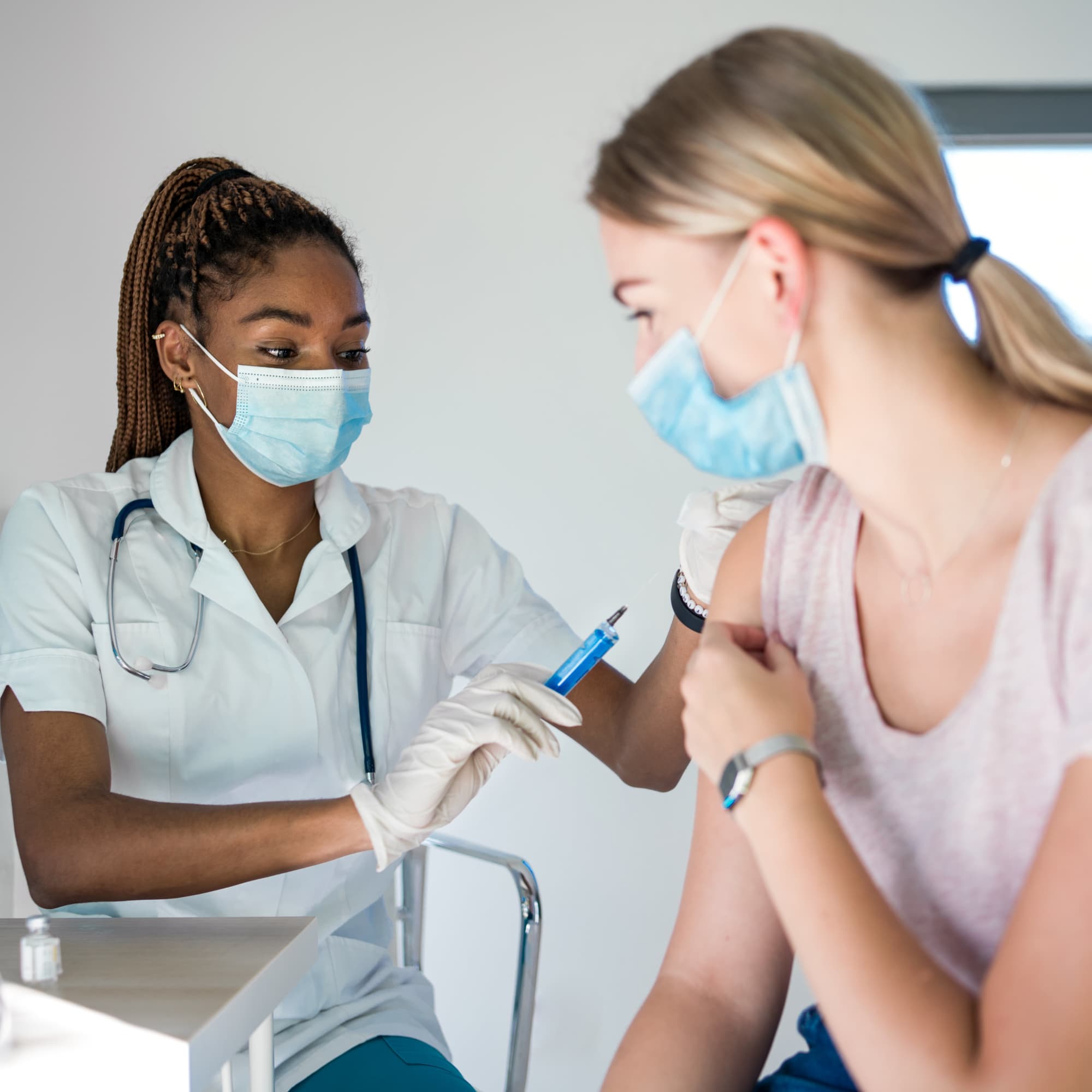
- POPSUGAR Australia
- Fitness
- How Do I Know If My COVID Vaccine Side Effects Aren’t Actually COVID?
How Do I Know If My COVID Vaccine Side Effects Aren’t Actually COVID?

If you’re one of the 10 percent of Americans who have received the COVID vaccine, you may be concerned with side effects you’ve experienced like fatigue and chills. How do you know if what you’re feeling isn’t actually COVID?
Shanthi Kappagoda, MD, an infectious-disease physician at Stanford Health Care, explained to POPSUGAR that a small percentage of people experience vaccine side effects such as injection-site reactions (redness or tenderness), fatigue, headaches, and chills, and a smaller number of people will have joint pain, fever, or swollen lymph nodes. These side effects usually last between two and four days.
“These symptoms can overlap with those of COVID-19,” Dr. Kappagoda said. In general, she said, if you get the vaccine and then develop these symptoms one to three days after the vaccine, but you’ve been social distancing and mask wearing, most likely these are just side effects of the vaccine. However, she said, if you’re concerned that you’ve recently been exposed to someone with COVID, or if your symptoms are not improving within two to four days, she would err on the side of caution and get a COVID test. It’s better to be safe and know, so if you are infected, you can quarantine and not pass it on to others.
It is possible to contract COVID after the first or second dose of the vaccine; the vaccine is most effective after both shots, usually administered weeks apart. Even after both shots, it takes a few weeks for your body to develop immunity against infection. If you get COVID after the first shot, Dr. Kappagoda said, the CDC recommends going ahead with the second shot. But she added that you should check with your doctor first in case these recommendations change.
POPSUGAR aims to give you the most accurate and up-to-date information about the coronavirus, but details and recommendations about this pandemic may have changed since publication. For the latest information on COVID-19, please check out resources from the WHO, CDC, and local public health departments.


